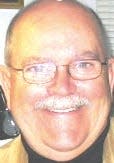Along the Way: Era ending with the WKSU-FM, Cleveland’s Ideastream partnership
The upcoming partnership between WKSU-FM radio and “Ideastream,” the Cleveland not-for-profit that holds the licenses for WVIZ/PBS, WCPN/NPR and WCLV/Classical Music, is probably the best package Kent State University can get, according to John Perry, the man who brought public broadcasting in radio to Kent State in 1973.

“Kevin Martin, the president and CEO of Ideastream, is a class act,” Perry said when we had lunch recently. Whereas Cleveland public radio at one point had a pernicious relationship with WKSU-FM, Martin seems to be genuinely collaborative in his approach, according to Perry. The change can reduce the cost of duplicate programming since Cleveland public radio and WKSU-FM have so much overlap.
WKSU’s call letters will survive for the time being, Perry said, because the university owns the license and WKSU in the new grouping has been designated as the news outlet. President Todd Diacon confirmed this assessment.

Perry cautioned that because one of KSU’s motivations for joining the partnership is eliminating its annual subsidy to WKSU-FM of $450,000, a change in the call letters might eventually happen if Kent State drops its financial support entirely.
The retired general manager of the station, who near the end of his career in 2001 also served as associate vice president for marketing and communications for KSU, Perry came to Kent State in 1971 from Indiana University, which already had its public radio station. Kent State’s WKSU, by contrast, was a student radio operation heavily devoted to campus events.
Aware that the Corporation for Public Broadcasting wanted public radio for the Akron-Canton area, Perry jumped at the opportunity to take WKSU into the realm of public radio broadcasting. He applied for the license on behalf of Kent State and won it despite competition from the University of Akron.
“We had the better package and the CPB granted WKSU’s application,” Perry said. Appreciative that Akron-Canton support would be crucial to WKSU-FM’s survival, Perry threw himself into advocating. He joined the Akron City Club and the Cascade Club, broadcast the Akron Round Table’s monthly speaker’s presentations, and served on the Akron Regional Development Board. His “Periginations” column in WKSU-FM’s printed materials was a good read.
WKSU-FM’s signal was strengthened from 7,500 to 50,000 watts. The station’s reach gradually grew by employing repeater stations that enabled WKSU-FM to build audiences in Wooster, Dover-New Philadelphia, points west of Massillon and Oberlin, and communities east of Cleveland up to Ashtabula. According to Arbitron, WKSU-FM became Ohio’s most listened to public radio station under Perry’s direction. It also gained acclaim for its news coverage.
Perry’s successor, Al Bartholet, kept up the advocacy and championed Folk Alley on a national scale, but after Bartholet left, WKSU-FM experienced challenges. Expenses rose. Revenues did not keep pace. The format change from classical music to news and commentary was right for the long run, Perry said, but came during the 2008 Great Recession. It took longer than anticipated for listeners to accept the change. The station depended on Akron-Canton generosity. Some program underwriters reduced their support. Perry said the current station general manager, Wendy Turner, has done a good job of trying to right the ship and that WKSU-FM entered the Ideastream negotiations from a position of market strength.
Perry said former KSU Presidents Brage Golding and Carol Cartwright were the two who best understood WKSU-FM as a university asset during his tenure. President Golding said the WKSU-FM subsidy amounted to some of the least expensive student recruitment radio advertising Kent State could buy in Northeast Ohio. Every day, the initials being broadcast every hour of the day gave the University positive recognition that KSU could never have afforded by purchasing radio adverting and National Public Radio programming excellence lent intellectual cachet to Kent State, Golding would say.
President Cartwright, who did much to enhance Kent State’s presence in Greater Cleveland, felt the same. In retirement, before leaving Kent for California in 2019, she served WKSU-FM on a volunteer community advisory board. Generous, she was a regular donor.
The new arrangement lets Kent State take over the building on campus at the juncture of East Summit Street and Loop Road, probably for students studying media. Expanded opportunity for students in media studies has been mentioned as a positive of the change. The staff will likely move from Kent into Cleveland so the campus may no longer host an operations center for WKSU-FM.
WKSU, at 89.7, has been designated as the news outlet in the collaboration with WCLV, at 104.9, a booster. WCPN, at 90.3, will become Greater Cleveland public radio’s classical music station. The new configuration makes Akron-Canton public radio broadcasting part of Greater Cleveland. It reduces the expense of duplicate programming.
David E. Dix is a former publisher of the Record-Courier.
This article originally appeared on Record-Courier: Era ending with the WKSU-FM, Cleveland’s Ideastream partnership

